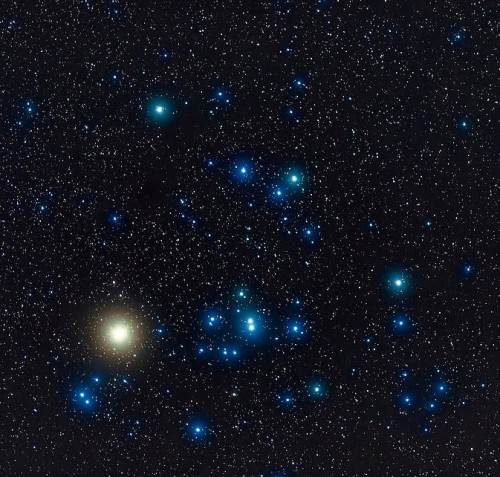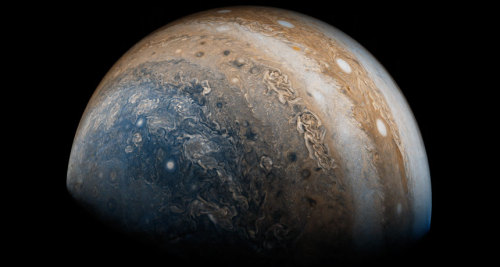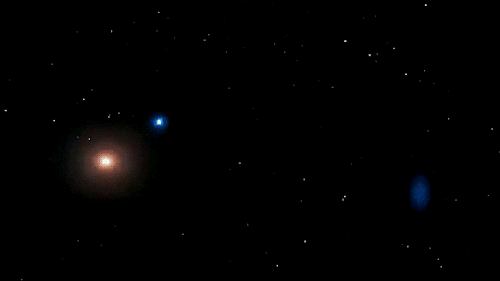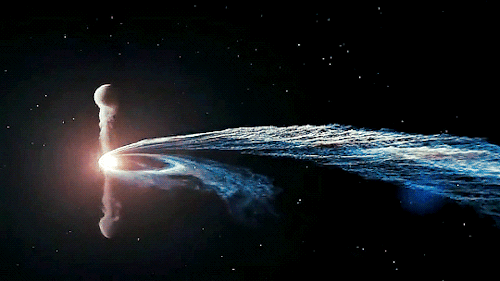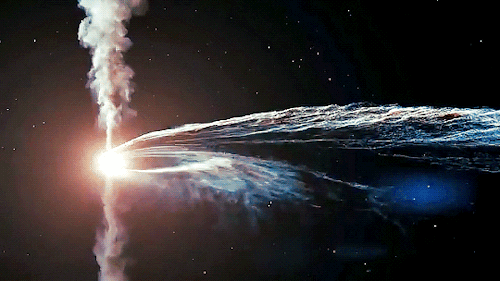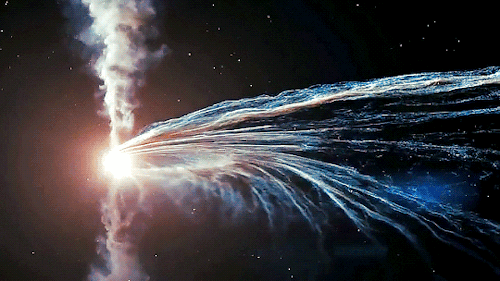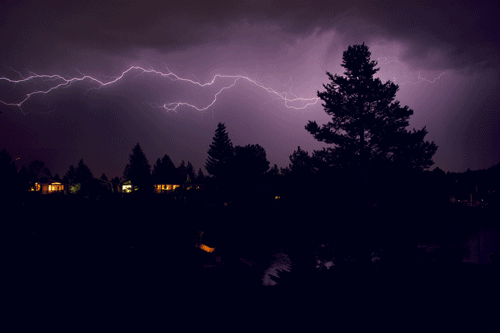
Amateur astronomer, owns a telescope. This is a side blog to satiate my science-y cravings! I haven't yet mustered the courage to put up my personal astro-stuff here. Main blog : @an-abyss-called-life
212 posts
Latest Posts by starry-shores - Page 3

Barnard 163, Black Swan
Discovering the Universe Through the Constellation Orion
Do you ever look up at the night sky and get lost in the stars? Maybe while you’re stargazing, you spot some of your favorite constellations. But did you know there’s more to constellations than meets the eye? They’re not just a bunch of imaginary shapes made up of stars — constellations tell us stories about the universe from our perspective on Earth.

What is a constellation?
A constellation is a named pattern of stars that looks like a particular shape. Think of it like connecting the dots. If you join the dots — stars, in this case — and use your imagination, the picture would look like an object, animal, or person. For example, the ancient Greeks believed an arrangement of stars in the sky looked like a giant hunter with a sword attached to his belt, so they named it after a famous hunter in their mythology, Orion. It’s one of the most recognizable constellations in the night sky and can be seen around the world. The easiest way to find Orion is to go outside on a clear night and look for three bright stars close together in an almost-straight line. These three stars represent Orion's belt. Two brighter stars to the north mark his shoulders, and two more to the south represent his feet.

Credit: NASA/STScI
Over time, cultures around the world have had different names and numbers of constellations depending on what people thought they saw. Today, there are 88 officially recognized constellations. Though these constellations are generally based on what we can see with our unaided eyes, scientists have also invented unofficial constellations for objects that can only be seen in gamma rays, the highest-energy form of light.
Perspective is everything
The stars in constellations may look close to each other from our point of view here on Earth, but in space they might be really far apart. For example, Alnitak, the star at the left side of Orion's belt, is about 800 light-years away. Alnilam, the star in the middle of the belt, is about 1,300 light-years away. And Mintaka, the star at the right side of the belt, is about 900 light-years away. Yet they all appear from Earth to have the same brightness. Space is three-dimensional, so if you were looking at the stars that make up the constellation Orion from another part of our galaxy, you might see an entirely different pattern!

The superstars of Orion
Now that we know a little bit more about constellations, let’s talk about the supercool cosmic objects that form them – stars! Though over a dozen stars make up Orion, two take center stage. The red supergiant Betelgeuse (Orion's right shoulder) and blue supergiant Rigel (Orion's left foot) stand out as the brightest members in the constellation.

Credit: Derrick Lim
Betelgeuse is a young star by stellar standards, about 10 million years old, compared to our nearly 5 billion-year-old Sun. The star is so huge that if it replaced the Sun at the center of our solar system, it would extend past the main asteroid belt between Mars and Jupiter! But due to its giant mass, it leads a fast and furious life.

Betelgeuse is destined to end in a supernova blast. Scientists discovered a mysterious dimming of Betelgeuse in late 2019 caused by a traumatic outburst that some believed was a precursor to this cosmic event. Though we don’t know if this incident is directly related to an imminent supernova, there’s a tiny chance it might happen in your lifetime. But don't worry, Betelgeuse is about 550 light-years away, so this event wouldn't be dangerous to us – but it would be a spectacular sight.
Rigel is also a young star, estimated to be 8 million years old. Like Betelgeuse, Rigel is much larger and heavier than our Sun. Its surface is thousands of degrees hotter than Betelgeuse, though, making it shine blue-white rather than red. These colors are even noticeable from Earth. Although Rigel is farther from Earth than Betelgeuse (about 860 light-years away), it is intrinsically brighter than its companion, making it the brightest star in Orion and one of the brightest stars in the night sky.

Credit: Rogelio Bernal Andreo
Buckle up for Orion’s belt
Some dots that make up constellations are actually more than one star, but from a great distance they look like a single object. Remember Mintaka, the star at the far right side of Orion's belt? It is not just a single star, but actually five stars in a complex star system.

Credit: X-ray: NASA/CXC/GSFC/M. Corcoran et al.; Optical: Eckhard Slawik
Sword or a stellar nursery?
Below the three bright stars of Orion’s belt lies his sword, where you can find the famous Orion Nebula. The nebula is only 1,300 light-years away, making it the closest large star-forming region to Earth. Because of its brightness and prominent location just below Orion’s belt, you can actually spot the Orion Nebula from Earth! But with a pair of binoculars, you can get a much more detailed view of the stellar nursery. It’s best visible in January and looks like a fuzzy “star” in the middle of Orion’s sword.

More to discover in constellations
In addition to newborn stars, Orion also has some other awesome cosmic objects hanging around. Scientists have discovered exoplanets, or planets outside of our solar system, orbiting stars there. One of those planets is a giant gas world three times more massive than Jupiter. It’s estimated that on average there is at least one planet for every star in our galaxy. Just think of all the worlds you may be seeing when you look up at the night sky!
It’s also possible that the Orion Nebula might be home to a black hole, making it the closest known black hole to Earth. Though we may never detect it, because no light can escape black holes, making them invisible. However, space telescopes with special instruments can help find black holes. They can observe the behavior of material and stars that are very close to black holes, helping scientists find clues that can lead them closer to discovering some of these most bizarre and fascinating objects in the cosmos.

Next time you go stargazing, remember that there’s more to the constellations than meets the eye. Let them guide you to some of the most incredible and mysterious objects of the cosmos — young stars, brilliant nebulae, new worlds, star systems, and even galaxies!

To keep up with the most recent stellar news, follow NASA Universe on Twitter and Facebook.
Make sure to follow us on Tumblr for your regular dose of space!
Hubble’s Guide to Viewing Deep Fields
They say a picture is worth a thousand words, but no images have left a greater impact on our understanding of the universe quite like the Hubble Space Telescope’s deep fields. Like time machines, these iconic images transport humanity billions of light-years back in time, offering a glimpse into the early universe and insight into galaxy evolution!

You’ve probably seen these images before, but what exactly do we see within them? Deep field images are basically core samples of our universe. By peering into a small portion of the night sky, we embark on a journey through space and time as thousands of galaxies appear before our very eyes.
So, how can a telescope the size of a school bus orbiting 340 miles above Earth uncover these mind-boggling galactic masterpieces? We’re here to break it down. Here’s Hubble’s step-by-step guide to viewing deep fields:
Step 1: Aim at the darkness
Believe it or not, capturing the light of a thousand galaxies actually begins in the dark. To observe extremely faint galaxies in the farthest corners of the cosmos, we need minimal light interference from nearby stars and other celestial objects. The key is to point Hubble’s camera at a dark patch of sky, away from the outer-edge glow of our own galaxy and removed from the path of our planet, the Sun, or the Moon. This “empty” black canvas of space will eventually transform into a stunning cosmic mosaic of galaxies.

The first deep field image was captured in 1995. In order to see far beyond nearby galaxies, Hubble’s camera focused on a relatively empty patch of sky within the constellation Ursa Major. The results were this step-shaped image, an extraordinary display of nearly 3,000 galaxies spread across billions of light-years, featuring some of the earliest galaxies to emerge shortly after the big bang.
Step 2: Take it all in
The universe is vast, and peering back billions of years takes time. Compared to Hubble’s typical exposure time of a few hours, deep fields can require hundreds of hours of exposure over several days. Patience is key. Capturing and combining several separate exposures allows astronomers to assemble a comprehensive core slice of our universe, providing key information about galaxy formation and evolution. Plus, by combining exposures from different wavelengths of light, astronomers are able to better understand galaxy distances, ages, and compositions.

The Hubble Ultra Deep Field is the deepest visible-light portrait of our universe. This astonishing display of nearly 10,000 galaxies was imaged over the course of 400 Hubble orbits around Earth, with a total of 800 exposures captured over 11.3 days.
Step 3: Go beyond what’s visible
The ability to see across billions of light-years and observe the farthest known galaxies in our universe requires access to wavelengths beyond those visible to the human eye. The universe is expanding and light from distant galaxies is stretched far across space, taking a long time to reach us here on Earth. This phenomenon, known as “redshift,” causes longer wavelengths of light to appear redder the farther they have to travel through space. Far enough away, and the wavelengths will be stretched into infrared light. This is where Hubble’s infrared vision comes in handy. Infrared light allows us to observe light from some of the earliest galaxies in our universe and better understand the history of galaxy formation over time.

In 2009, Hubble observed the Ultra Deep Field in the infrared. Using the Near Infrared Camera and Multi-Object Spectrometer, astronomers gathered one of the deepest core samples of our universe and captured some of the most distant galaxies ever observed.
Step 4: Use your time machine
Apart from their remarkable beauty and impressive imagery, deep field images are packed with information, offering astronomers a cosmic history lesson billions of years back in time within a single portrait. Since light from distant galaxies takes time to reach us, these images allow astronomers to travel through time and observe these galaxies as they appear at various stages in their development. By observing Hubble’s deep field images, we can begin to discover the questions we’ve yet to ask about our universe.

Credit: NASA, ESA, R. Bouwens and G. Illingworth (University of California, Santa Cruz)
Hubble’s deep field images observe galaxies that emerged as far back as the big bang. This image of the Hubble Ultra Deep Field showcases 28 of over 500 early galaxies from when the universe was less than one billion years old. The light from these galaxies represent different stages in their evolution as their light travels through space to reach us.
Step 5: Expand the cosmic frontier
Hubble’s deep fields have opened a window to a small portion of our vast universe, and future space missions will take this deep field legacy even further. With advancements in technologies and scientific instruments, we will soon have the ability to further uncover the unimaginable.


Slated for launch in late 2021, NASA’s James Webb Space Telescope will offer a new lens to our universe with its impressive infrared capabilities. Relying largely on the telescope’s mid-infrared instrument, Webb will further study portions of the Hubble deep field images in greater detail, pushing the boundaries of the cosmic frontier even further.
And there you have it, Hubble’s guide to unlocking the secrets of the cosmos! To this day, deep field images remain fundamental building blocks for studying galaxy formation and deepening not only our understanding of the universe, but our place within it as well.
Still curious about Hubble Deep Fields? Explore more and follow along on Twitter, Facebook, and Instagram with #DeepFieldWeek!
Make sure to follow us on Tumblr for your regular dose of space!

A rendered view of the night sky from a planet in a globular cluster. Source: Reddit
10 Ways to BBQ on an Alien World
There are over 3,700 planets in our galaxy. Many of them orbit stars outside our solar system, these are known as exoplanets. Spend a summer weekend barbecuing it up on any of these alien worlds.
(WARNING: Don’t try any of this on Earth—except the last one.)
1. Lava World
Janssen aka 55 Cancri e

Hang your steak on a fishing pole and dangle your meat over the boiling pools of lava on this possible magma world. Try two to three minutes on each side to get an ashy feast of deliciousness.
2. Hot Jupiter
Dimidium aka 51 Pegasi b

Set your grill to 1800 degrees Fahrenheit (982 degrees Celsius) or hop onto the first exoplanet discovered and get a perfect char on your hot dogs. By the time your dogs are done, it’ll be New Year’s Eve, because a year on this planet is only four days long.
3. Super Earth
HD 40307 g

Super air fry your duck on this Super Earth, as you skydive in the intense gravity of a planet twice as massive as Earth. Why are you air frying a duck? We don’t know. Why are you skydiving on an exoplanet? We’re not judging.
4. Lightning Neptune
HAT-P-11b

I’ve got steaks, they’re multiplying/and I’m looooosing control. Cause the power this planet is supplying/is electrifying!
Sear your tuna to perfection in the lightning strikes that could flash across the stormy skies of this Neptune-like planet named HAT-P-11b.
5. Red Earth
Kepler-186f

Tired of all that meat? Try a multi-colored salad with the vibrant plants that could grow under the red sun of this Earth-sized planet. But it could also be a lifeless rock, so BYOB (bring your own barbecue).
6. Inferno World
Kepler-70b

Don’t take too long to prep your vegetables for the grill! The hottest planet on record will flash-incinerate your veggies in seconds!
7. Egg-shaped
WASP-12b

Picture this: You are pressure cooking your chicken on a hot gas giant in the shape of an egg. And you’re under pressure to cook fast, because this gas giant is being pulled apart by its nearby star.
8. Two suns
Kepler-16b

Evenly cook your ribs in a dual convection oven under the dual stars of this “Tatooine.” Kick back and watch your two shadows grow in the fading light of a double sunset.
9. Takeout
Venus

Order in for a staycation in our own solar system. The smell of rotten eggs rising from the clouds of sulfuric acid and choking carbon dioxide will put you off cooking, so get that meal to go.
10. Take a Breath
Earth

Sometimes the best vacations are the ones you take at home. Flip your burgers on the only planet where you can breathe the atmosphere.
Grill us on Twitter and tell us how bad our jokes are.
Read the full version of this week’s ‘Solar System: 10 Things to Know’ Article HERE.
Make sure to follow us on Tumblr for your regular dose of space: http://nasa.tumblr.com.
The Kepler space telescope has shown us our galaxy is teeming with planets — and other surprises

The Kepler space telescope has taught us there are so many planets out there, they outnumber even the stars. Here is a sample of these wondrous, weird and unexpected worlds (and other spectacular objects in space) that Kepler has spotted with its “eye” opened to the heavens.
Kepler has found that double sunsets really do exist.

Yes, Star Wars fans, the double sunset on Tatooine could really exist. Kepler discovered the first known planet around a double-star system, though Kepler-16b is probably a gas giant without a solid surface.
Kepler has gotten us closer to finding planets like Earth.

Nope. Kepler hasn’t found Earth 2.0, and that wasn’t the job it set out to do. But in its survey of hundreds of thousands of stars, Kepler found planets near in size to Earth orbiting at a distance where liquid water could pool on the surface. One of them, Kepler-62f, is about 40 percent bigger than Earth and is likely rocky. Is there life on any of them? We still have a lot more to learn.
This sizzling world is so hot iron would melt!

One of Kepler’s early discoveries was the small, scorched world of Kepler-10b. With a year that lasts less than an Earth day and density high enough to imply it’s probably made of iron and rock, this “lava world” gave us the first solid evidence of a rocky planet outside our solar system.
If it’s not an alien megastructure, what is this oddly fluctuating star?

When Kepler detected the oddly fluctuating light from “Tabby’s Star,” the internet lit up with speculation of an alien megastructure. Astronomers have concluded it’s probably an orbiting dust cloud.
Kepler caught this dead star cannibalizing its planet.

What happens when a solar system dies? Kepler discovered a white dwarf, the compact corpse of a star in the process of vaporizing a planet.
These Kepler planets are more than twice the age of our Sun!

The five small planets in Kepler-444 were born 11 billion years ago when our galaxy was in its youth. Imagine what these ancient planets look like after all that time?
Kepler found a supernova exploding at breakneck speed.

This premier planet hunter has also been watching stars explode. Kepler recorded a sped-up version of a supernova called a “fast-evolving luminescent transit” that reached its peak brightness at breakneck speed. It was caused by a star spewing out a dense shell of gas that lit up when hit with the shockwave from the blast.
* All images are artist illustrations.
Make sure to follow us on Tumblr for your regular dose of space: http://nasa.tumblr.com
Can you tell us something about j1407b?
J1407b is an exoplanet (but it can also be a brown dwarf) very interesting, orbiting its star J1407. It is larger than Saturn or Jupiter, and is surrounded by a ring system that is about 200 times larger than the rings of Saturn, very different from what we are accustomed to see.

Thirty-seven rings extending 90 million kilometers from the planet — over half the distance from the Earth to the sun — encircle the world. These planetary rings are the first found outside the solar system.

This exoplanet is 434 light-years away in the constellation Centaurus.

J1407b could house moons that could be formed by the material of the rings. One of their moons could be as large as Mars or Earth, and could orbit between the gaps of the rings, shaping them.

Astronomers expect the rings to become thinner in the next million years and eventually disappear as they form satellites from the material of the rings.

The discovery of the J1407 system and its unusual eclipses were reported by the team led by astronomer Eric Mamajek of the University of Rochester in 2012. The orbital period of J1407b is estimated at about a decade.
Simulation of the eclipse of the star J1407 by the ring system around its putative exoplanet J1407b. Each time a ring passed in front of the star, it dimmed. When entering a gap, the star brightened up again. Graphing the highs and lows, scientists created a profile of the ring system.

What the rings of J1407b would look like in our sky (above the Old Observatory in Leiden, Netherlands) if it was located where Saturn is now.
image 1°, image 2°, image 3°, image 4, image 5° & image 7°
Here are some links if you want to read more about it: here, here and here.
Black Holes: Seeing the Invisible!
Black holes are some of the most bizarre and fascinating objects in the cosmos. Astronomers want to study lots of them, but there’s one big problem – black holes are invisible! Since they don’t emit any light, it’s pretty tough to find them lurking in the inky void of space. Fortunately there are a few different ways we can “see” black holes indirectly by watching how they affect their surroundings.

Speedy stars
If you’ve spent some time stargazing, you know what a calm, peaceful place our universe can be. But did you know that a monster is hiding right in the heart of our Milky Way galaxy? Astronomers noticed stars zipping superfast around something we can’t see at the center of the galaxy, about 10 million miles per hour! The stars must be circling a supermassive black hole. No other object would have strong enough gravity to keep them from flying off into space.

Two astrophysicists won half of the Nobel Prize in Physics last year for revealing this dark secret. The black hole is truly monstrous, weighing about four million times as much as our Sun! And it seems our home galaxy is no exception – our Hubble Space Telescope has revealed that the hubs of most galaxies contain supermassive black holes.
Shadowy silhouettes
Technology has advanced enough that we’ve been able to spot one of these supermassive black holes in a nearby galaxy. In 2019, astronomers took the first-ever picture of a black hole in a galaxy called M87, which is about 55 million light-years away. They used an international network of radio telescopes called the Event Horizon Telescope.

In the image, we can see some light from hot gas surrounding a dark shape. While we still can’t see the black hole itself, we can see the “shadow” it casts on the bright backdrop.
Shattered stars
Black holes can come in a smaller variety, too. When a massive star runs out of the fuel it uses to shine, it collapses in on itself. These lightweight or “stellar-mass” black holes are only about 5-20 times as massive as the Sun. They’re scattered throughout the galaxy in the same places where we find stars, since that’s how they began their lives. Some of them started out with a companion star, and so far that’s been our best clue to find them.

Some black holes steal material from their companion star. As the material falls onto the black hole, it gets superhot and lights up in X-rays. The first confirmed black hole astronomers discovered, called Cygnus X-1, was found this way.
If a star comes too close to a supermassive black hole, the effect is even more dramatic! Instead of just siphoning material from the star like a smaller black hole would do, a supermassive black hole will completely tear the star apart into a stream of gas. This is called a tidal disruption event.
Making waves
But what if two companion stars both turn into black holes? They may eventually collide with each other to form a larger black hole, sending ripples through space-time – the fabric of the cosmos!

These ripples, called gravitational waves, travel across space at the speed of light. The waves that reach us are extremely weak because space-time is really stiff.
Three scientists received the 2017 Nobel Prize in Physics for using LIGO to observe gravitational waves that were sent out from colliding stellar-mass black holes. Though gravitational waves are hard to detect, they offer a way to find black holes without having to see any light.
We’re teaming up with the European Space Agency for a mission called LISA, which stands for Laser Interferometer Space Antenna. When it launches in the 2030s, it will detect gravitational waves from merging supermassive black holes – a likely sign of colliding galaxies!

Rogue black holes
So we have a few ways to find black holes by seeing stuff that’s close to them. But astronomers think there could be 100 million black holes roaming the galaxy solo. Fortunately, our Nancy Grace Roman Space Telescope will provide a way to “see” these isolated black holes, too.

Roman will find solitary black holes when they pass in front of more distant stars from our vantage point. The black hole’s gravity will warp the starlight in ways that reveal its presence. In some cases we can figure out a black hole’s mass and distance this way, and even estimate how fast it’s moving through the galaxy.
For more about black holes, check out these Tumblr posts!
⚫ Gobble Up These Black (Hole) Friday Deals!
⚫ Hubble’s 5 Weirdest Black Hole Discoveries
Make sure to follow us on Tumblr for your regular dose of space: http://nasa.tumblr.com.
Celebrating Five Years at Jupiter!
We just released new eye-catching posters and backgrounds to celebrate the five-year anniversary of Juno’s orbit insertion at Jupiter in psychedelic style.

On July 4, 2016, our Juno spacecraft arrived at Jupiter on a mission to peer through the gas giant planet’s dense clouds and answer questions about the origins of our solar system. Since its arrival, Juno has provided scientists a treasure trove of data about the planet’s origins, interior structures, atmosphere, and magnetosphere.

Juno is the first mission to observe Jupiter’s deep atmosphere and interior, and will continue to delight with dazzling views of the planet’s colorful clouds and Galilean moons. As it circles Jupiter, Juno provides critical knowledge for understanding the formation of our own solar system, the Jovian system, and the role giant planets play in putting together planetary systems elsewhere.
Get the posters and backgrounds here!
For more on our Juno mission at Jupiter, follow NASA Solar System on Twitter and Facebook.
Make sure to follow us on Tumblr for your regular dose of space!
The Stellar Buddy System
Our Sun has an entourage of planets, moons, and smaller objects to keep it company as it traverses the galaxy. But it’s still lonely compared to many of the other stars out there, which often come in pairs. These cosmic couples, called binary stars, are very important in astronomy because they can easily reveal things that are much harder to learn from stars that are on their own. And some of them could even host habitable planets!

The birth of a stellar duo
New stars emerge from swirling clouds of gas and dust that are peppered throughout the galaxy. Scientists still aren’t sure about all the details, but turbulence deep within these clouds may give rise to knots that are denser than their surroundings. The knots have stronger gravity, so they can pull in more material and the cloud may begin to collapse.
The material at the center heats up. Known as a protostar, it is this hot core that will one day become a star. Sometimes these spinning clouds of collapsing gas and dust may break up into two, three, or even more blobs that eventually become stars. That would explain why the majority of the stars in the Milky Way are born with at least one sibling.
Seeing stars

We can’t always tell if we’re looking at binary stars using just our eyes. They’re often so close together in the sky that we see them as a single star. For example, Sirius, the brightest star we can see at night, is actually a binary system (see if you can spot both stars in the photo above). But no one knew that until the 1800s.
Precise observations showed that Sirius was swaying back and forth like it was at a middle school dance. In 1862, astronomer Alvan Graham Clark used a telescope to see that Sirius is actually two stars that orbit each other.

But even through our most powerful telescopes, some binary systems still masquerade as a single star. Fortunately there are a couple of tricks we can use to spot these pairs too.
Since binary stars orbit each other, there’s a chance that we’ll see some stars moving toward and away from us as they go around each other. We just need to have an edge-on view of their orbits. Astronomers can detect this movement because it changes the color of the star’s light – a phenomenon known as the Doppler effect.

Stars we can find this way are called spectroscopic binaries because we have to look at their spectra, which are basically charts or graphs that show the intensity of light being emitted over a range of energies. We can spot these star pairs because light travels in waves. When a star moves toward us, the waves of its light arrive closer together, which makes its light bluer. When a star moves away, the waves are lengthened, reddening its light.

Sometimes we can see binary stars when one of the stars moves in front of the other. Astronomers find these systems, called eclipsing binaries, by measuring the amount of light coming from stars over time. We receive less light than usual when the stars pass in front of each other, because the one in front will block some of the farther star’s light.
Sibling rivalry
Twin stars don’t always get along with each other – their relationship may be explosive! Type Ia supernovae happen in some binary systems in which a white dwarf – the small, hot core left over when a Sun-like star runs out of fuel and ejects its outer layers – is stealing material away from its companion star. This results in a runaway reaction that ultimately detonates the thieving star. The same type of explosion may also happen when two white dwarfs spiral toward each other and collide. Yikes!

Scientists know how to determine how bright these explosions should truly be at their peak, making Type Ia supernovae so-called standard candles. That means astronomers can determine how far away they are by seeing how bright they look from Earth. The farther they are, the dimmer they appear. Astronomers can also look at the wavelengths of light coming from the supernovae to find out how fast the dying stars are moving away from us.
Studying these supernovae led to the discovery that the expansion of the universe is speeding up. Our Nancy Grace Roman Space Telescope will scan the skies for these exploding stars when it launches in the mid-2020s to help us figure out what’s causing the expansion to accelerate – a mystery known as dark energy.

Spilling stellar secrets
Astronomers like finding binary systems because it’s a lot easier to learn more about stars that are in pairs than ones that are on their own. That’s because the stars affect each other in ways we can measure. For example, by paying attention to how the stars orbit each other, we can determine how massive they are. Since heavier stars burn hotter and use up their fuel more quickly than lighter ones, knowing a star’s mass reveals other interesting things too.
By studying how the light changes in eclipsing binaries when the stars cross in front of each other, we can learn even more! We can figure out their sizes, masses, how fast they’re each spinning, how hot they are, and even how far away they are. All of that helps us understand more about the universe.
Tatooine worlds

Thanks to observatories such as our Kepler Space Telescope, we know that worlds like Luke Skywalker’s home planet Tatooine in “Star Wars” exist in real life. And if a planet orbits at the right distance from the two stars, it could even be habitable (and stay that way for a long time).
In 2019, our Transiting Exoplanet Survey Satellite (TESS) found a planet, known as TOI-1338 b, orbiting a pair of stars. These worlds are tricker to find than planets with only one host star, but TESS is expected to find several more!
Want to learn more about the relationships between stellar couples? Check out this Tumblr post: https://nasa.tumblr.com/post/190824389279/cosmic-couples-and-devastating-breakups
Make sure to follow us on Tumblr for your regular dose of space: http://nasa.tumblr.com
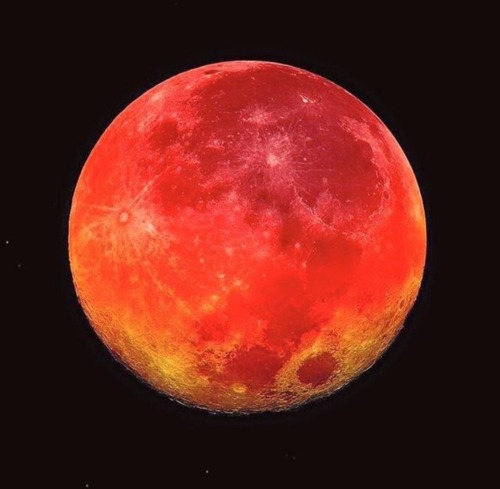

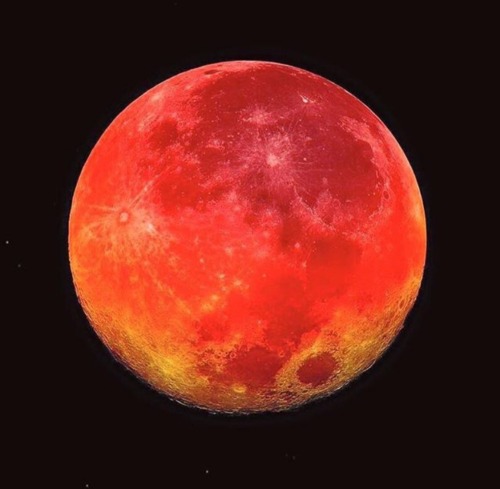
“You’re basically seeing all of the sunrises and sunsets across the world, at once, being reflected off the surface of the moon” – NASA
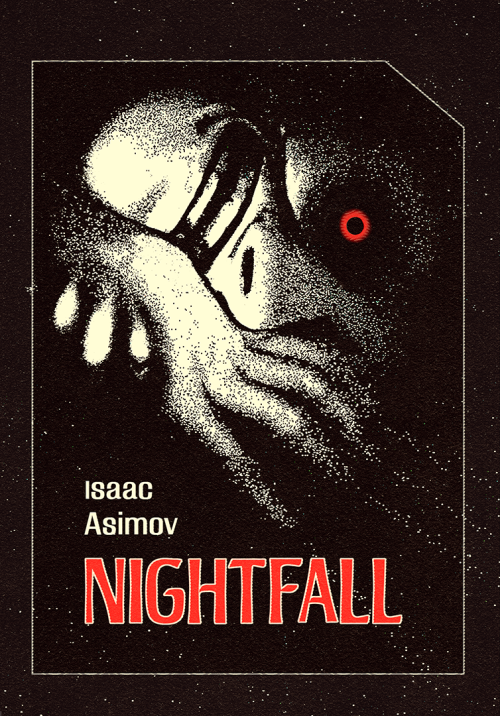

Book cover assignment for class, we had three short scifi stories to choose from and I chose Isaac Asimov’s “Nightfall”. 🔴🌌

Sh2-101, Cygnus

Hubble Spots Flock of Cosmic Ducks by NASA Goddard Photo and Video

Sun’s corona during a solar-eclipse.







